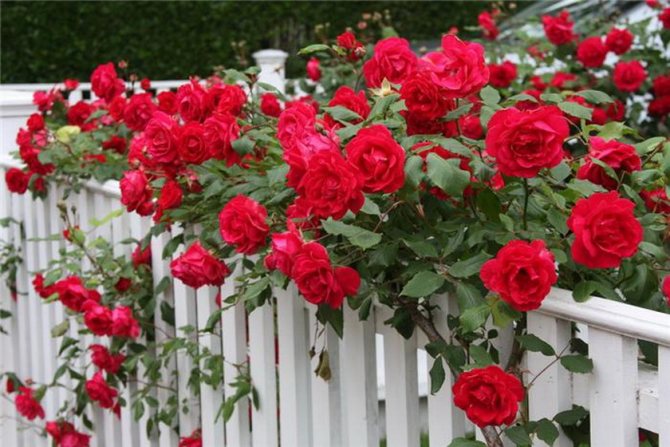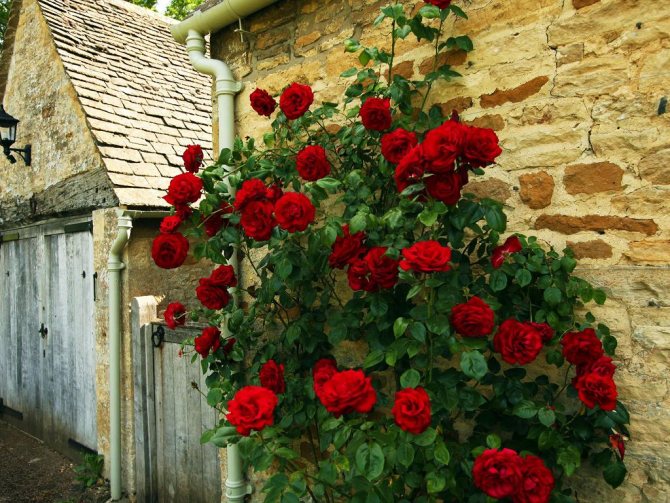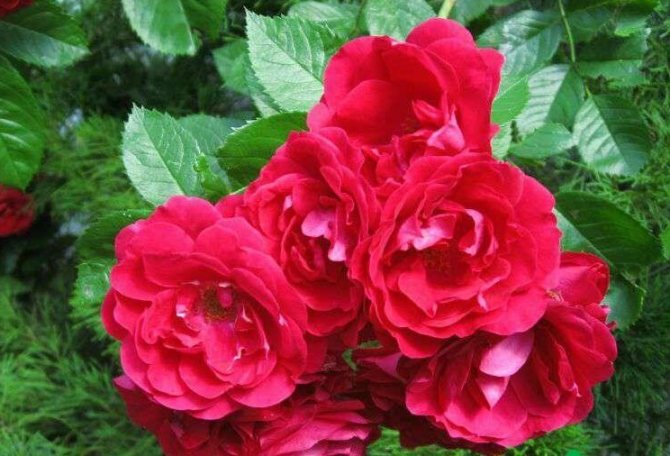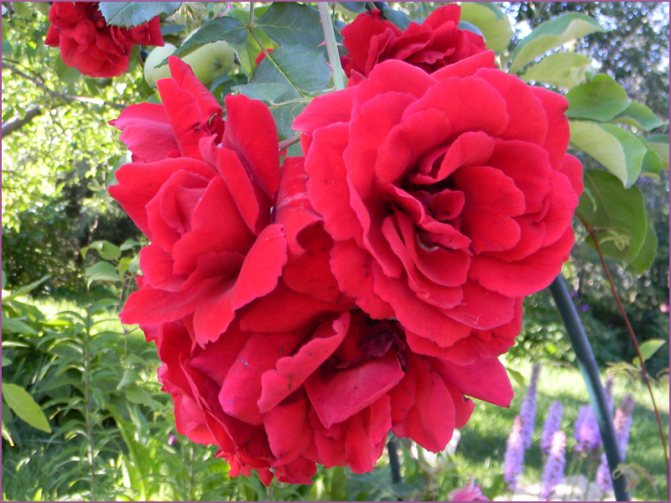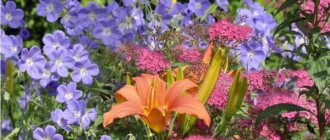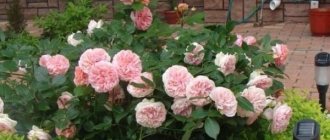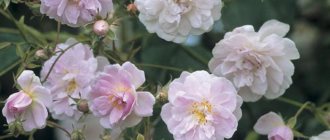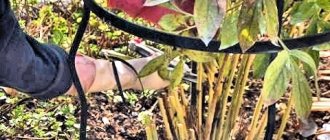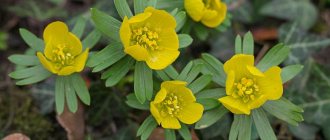Climbing roses are roses with long, creeping or drooping shoots, for the growth of which support is absolutely necessary. Among them there are roses that bloom once a year, as well as remontant ones, that is, they bloom many times.

Winter-hardy varieties of climbing roses
Nature has created amazing plants, and man seeks to surround himself with this splendor. And also comes up with new unusually beautiful variations. Roses are one of the mesmerizing flowers. Climbing roses blooming all summer, winter-hardy varieties are perfect for growing at various supports, fences and arches. On the one hand, they resemble a wild rosehip, and on the other hand, amazing specimens obtained after the application of great work, which attract not only their appearance, but also filling the space with a pleasant aroma.
Most of the varieties are represented by modern large-flowered roses. Flowering occurs in waves, and for some varieties it is practically uninterrupted. They can reach a height of two to three meters. Flowers fall exquisitely from arches or gazebos, creating a delightful view. They are perfect for transforming the backyard territory, not only delighting the owner and others with their beauty, but also raising the spirits. The buds have a wonderful aroma.


In order for roses to bloom for a long time, they need careful care. The plant will have to be tied up and directed in the right direction. Climbing roses blooming all summer will be lush only if you follow the requirements, then winter-hardy varieties will grow in comfortable conditions.
Important! For roses to be luxurious, planting and caring for them must be followed correctly.
Caring for planted bushes
The main rules for caring for climbing roses include regular watering, timely feeding of plants, garter and pruning of shoots, sheltering bushes for the winter and protecting them from pests and diseases. Let's consider each point in more detail.
Watering and feeding
Climbing shrubs do not like excess moisture and tolerate drought without problems. It is recommended to water them once a week with a small amount of water, which should not be cold. Overmoistening plants can lead to viral diseases and poor appearance of the bushes.
Fertilizing roses is best manure or other organic fertilizers, alternating them with mineral dressings. It should be borne in mind that young plants at first will be sufficiently fertilized when planting soil. Therefore, it is not necessary to feed them too often. The next year after planting, caring for climbing roses will consist of fertilizing with fertilizers of the following composition:
- fresh black soil;
- humus;
- phosphorus complementary foods;
- humus.
With such a mixture, the soil in which the roses grow "revives" in spring and autumn. If it is not possible to prepare the composition yourself, then you can buy ready-made fertilizer for roses.
Pruning shoots
All climbing roses are divided into two types, each of which requires a certain pruning:
- In shrubs flowering from June to July, after planting, all shoots are shortened. There should be shoots 30 cm long. New stems that appear during active growth are cut off as needed to form a beautiful bush.
- Roses with a small number of basal shoots, which appear only on old branches, are shortened to 30 cm in the first year. The next year after planting, all old shoots are cut out completely.
Garter of climbing roses
After pruning, new branches will begin to grow, which need to be guided, giving the bush the intended shape. To form more buds, individual lashes are tied. At the same time, it is undesirable that they are directed only upward, since with this arrangement, the buds are formed only at the tops.
For lush flowering bushes there are several ways to tie:
- Shoots can be fanned out, leaving the side branches not tied up. They will not interfere with each other, freely extending to the sides and up.
- The main shoots are horizontal, tied to the support. After a while, they will give new side branches that will grow upward, forming a cloud of beautiful flowers.
- In order for the curly branches to braid an arch or a pillar, they are tied up in a spiral, twisting around the support.
Whichever way the bush is formed, one should not neglect the care of climbing roses and preparing them for winter.
Protecting roses from frost
Before proceeding with the shelter, the bushes must be prepared. For this, leaves are removed from them, old loops and weak shoots are cut out. As a result there should be 11-12 healthy and strong shoots... All work is carried out in dry weather.
The way a climbing plant hides depends on the region in which it grows. In regions with a mild climate, the branches can not be removed from the support, first covering them with spruce branches, and then wrapping them with foil.
In areas with severe winters, the plants are completely removed from the support. First, they are collected in a large bundle and tied. After the air temperature drops to -5C, they gently tilt to the ground, where they are fixed with wire or pegs. The base of the bush is sprinkled with a mixture of peat and soil, and the shoots are covered with spruce branches. From above everything takes cover thick film or agrofiber.
It is very important to remove the shelter on time in the spring. Otherwise, in a humid environment and without fresh air, the roses may suffocate and start to hurt. On open bushes, shoots are refreshed and tied to supports. The first feeding is recommended only after the appearance of young leaves.
Diseases of climbing roses
In case of errors in the care and incorrect arrangement of the bushes on the site, they may be affected by the following diseases:
- Black spot occurs on young shoots in warm weather and heavy rains. You can recognize it by the black and brown spots on the leaves, which have a yellow halo. All affected leaves are removed from the plant and burned. Feeding is done with phosphate and potassium.
- Powdery mildew progresses with increased humidity. If a white bloom appears on the leaves and stems, and the flowers do not bloom, then this indicates that the plant is sick. The bushes are processed with iron and copper sulfate, all the affected areas are cut out, the soil is dug up.
- Bacterial cancer can be recognized by the growths and bumps on the roots. They are soft at first, but darken over time. The plant begins to dry out and dies. The affected roots are cut out, and the remaining ones are treated with copper sulfate.
When treating climbing roses, it must be remembered that all cut off affected areas must be burned... Otherwise, they can infect other plants.
Proper planting and care is the key to the abundant and long-lasting flowering of these royal flowers. Those who decide to grow climbing roses on their site will never regret it.
Planting and caring for climbing roses
Classification of winter-hardy roses
In addition to the division into varieties and varieties, the division also goes into groups. The systematization is as follows:
- First group.True roses have elastic shoots in the shape of an arc. They grow up to 5 meters. The thorns are beautiful, thin. The bloom is rich, lasting about a month in the first part of summer. The foliage is small. Representatives are winter-hardy.
- Second group. Created by mixing remontant, tea and hybrid tea roses. Plants are interesting with strong growth up to four meters. It turned out with voluminous flowers, they differ in the second flowering. Cold resistance, partial disease resistance.
- Third group. Created by changes in shrub roses with voluminous flowering. They have a rapid development, bear fruit a little later. Bright colors.
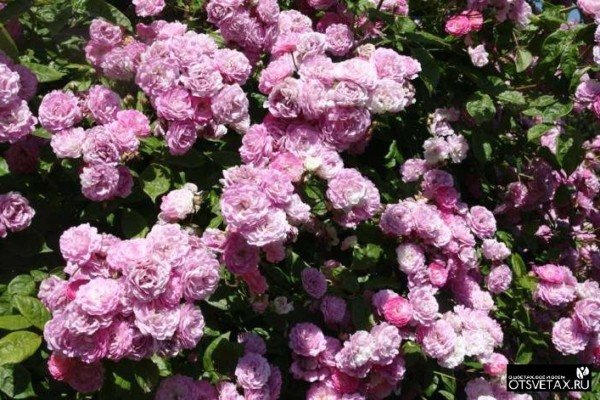

General information about the plant
Climbing roses are represented by rose hips and garden roses with long branching stems. There are 3 large groups of this flower culture.
Rambler
Roses-ramblers - curly - have flexible arched or creeping shoots-whips. Plants are bred on the basis of species such as multiflora and Vihura. Most varieties are frost-resistant and able to winter comfortably under relatively light shelter. In length, the plant can reach 7-10 m. Rambler bloom profusely, inflorescences from baskets about 2.5 cm in diameter are placed along the entire length of the stem. The flowers of climbing rose varieties have a faint aroma and are simple, double or semi-double. The flowering period begins in the first half of summer and lasts 4-6 weeks.
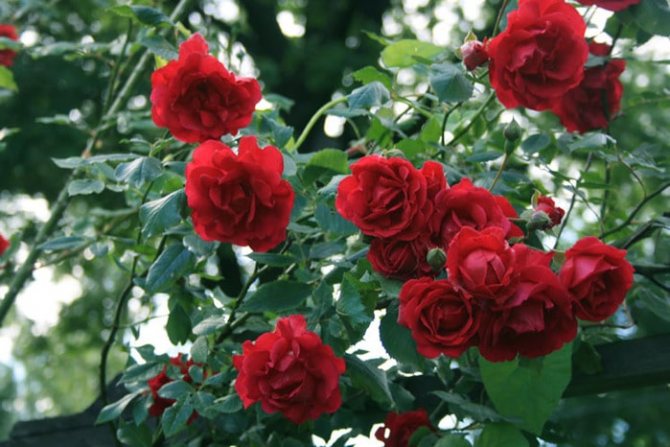

Climbing rose Rambler
Climber
Large-flowered climbing climber roses - climbing - created by crossing Rambler groups with remontant, tea, hybrid tea and floribunda. The diameter of the flowers is from 4 cm, they are similar in shape to hybrid tea. Climber branches are thick, shoots are not very flexible, grow up to 4 m in length. Abundant flowering, most varieties bloom 2 times a season. Climbers are relatively frost-resistant.


Climbing rose Climber
Climbing
Climing is characterized by powerful growth and luxurious flowers with a diameter of 4-11 cm. Representatives of this group are formed by mutating bush varieties in the form of hybrid tea, floribunda and grandflora. Climings are known for re-flowering and are cultivated in southern regions with relatively mild climates.


Climbing Rose
Climbing roses blooming all summer winter-hardy varieties
There are two key characteristics by which the division occurs: small-flowered and large-flowered.
Roses with small flowers are called Rambler. Their difference is in thin and plastic shoots. They hatch in early summer with small and primitive flowers. Flowering once on last year's branches, this should be taken into account when pruning and covering.
Rambler are not whimsical enough, they are winter-hardy blooming all summer long. These include:
- Bobby James. The best among small-flowered representatives. Up to eight meters in height, up to three in width. The foliage is green, but with abundant flowering, it is practically invisible. Roses are creamy white, up to five centimeters. Emitting a musky aroma. The variety is frost-resistant, resistant to diseases. Suitable for the Moscow region.
- Super Dorothy. Growth up to 2.5 meters. The foliage is small. Late flowering, but rich and repetitive. The variety is resistant to diseases, flowers hold on until the onset of cold weather.
- Rambling Rector. In length it can reach more than seven meters. The color is pink, but gradually turns into white. Roses are resistant to diseases and low light.
- Dortmund. Up to three meters long. The flowers are up to nine centimeters in size. The smell is not strong. Frost-resistant variety.
- Snow Goose. A sturdy and attractive creation. Growth over three meters. The foliage is dark, with few thorns. Flowers up to five centimeters, blooming all season almost uninterruptedly and abundantly. Resistance to disease and frost.
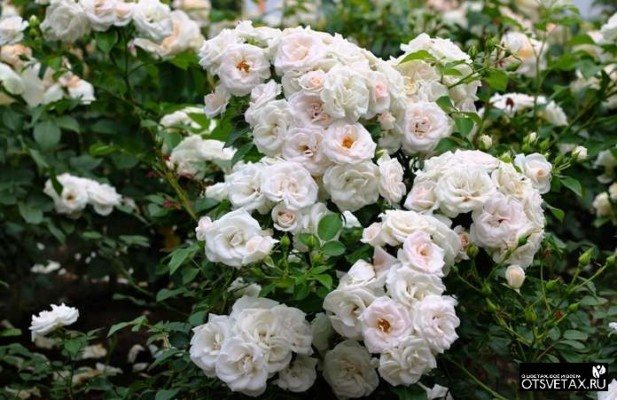

Snow-goose
The second group of Climing is climbing roses with strong, thick and firm shoots. Bred by crossing.Repeatedly, abundantly and for a long time, varieties blooming on the shoots of the current year and past years. The flowers are large, partly with an intense aroma.
Climing varieties:
- Michael (Orfeo). The buds have a gorgeous dark color. Velvet petals with a refined scent that grows stronger in the cool. The foliage is sparkling, dense, large. Resistant to disease, but sensitive to rain. Flowering is continuous from June to October inclusive.
- Handel. The first re-blooming climber. With dark pink edging. The waviness of the flower lends sophistication. Inflorescences are formed in 3-9 pieces. As beautiful as possible when half-open. Flowers are modified according to weather conditions. Among the roses, the variety has the most beautiful color contrast.
- Elf. Height up to 2.5 meters. Vigorous plant, large foliage. Flowers are greenish-white. Size up to fourteen centimeters. The aroma is fruity. Resistant to rain and disease.
- Polka. A special rose. It is grown in two ways: as not a high claming, or as a large, arched scrub. The buds are concentrated apricot color, to creamy at the edges, the substrate is darker, which forms a color play. Flowering takes place repeatedly. Disease resistance. The variation in the appearance of roses depends on the climatic conditions. It can reach a height of three meters. The smell is not strong.
- Rimos. Possess a vivid yellow color, with strong sun to lemon. Golden stamens are visible in the flower. Flowering is abundant, lasts until cold weather.
- Gloria Day Climing. The flowers are yellow, not intense, with a pink border. Up to 15 centimeters. Flowers have a faint pleasant fruity aroma, solitary. Goblet shape. The plant can reach those meters. The foliage is dark and green. Flowering medium, repetitive. Winter hardy.
- Golden Parfum. Rose with voluminous buds, twelve centimeters. Fragrant, rain resistant. They have a rich yellow color, enhanced by red stamens. The plant is branched, up to three meters. Flowering has time to repeat itself twice. This variety is one of the most famous among climbing roses. Flower in the shape of a cup. Flowers bloom slowly, due to which the owner pleases for a long time.
- Parade. The variety is suitable for small gardens. The flowers are large, concentrated pink or cherry red, cupped in shape, and the bushes are not particularly tall. Resistance to rain, frost is average. Rich repetitive bloom.
- Schwanensee. A popular, hardy variety, systematically blooming, resistant to rain. The flowers are voluminous, white with a slight pink tint. Looks great on bush with bright green foliage. The buds have a standard appearance, an elongated shape. Flowers open slowly. The diameter is seven to eight centimeters. On shoots, as a rule, there are no more than three of them. Flowers exude a delicate scent. Long repetitive flowering.
Varieties of semi-twisted roses Cordes:
- Flamingant. An actively blooming rose with a picturesque crimson color. Flowering takes place once, but can last up to thirty days. The diameter is about eight centimeters. Roses are in inflorescences of three to sixteen pieces. Excellent winter hardiness is excellent for growing in Siberia. The plant is resistant to the most important diseases.
- Sympathy. Winter-hardy hybrid. Flowers with a tall glass, concentrated red, with dark reflections. The first flowering is abundant, the repeated ones are weaker. The plant is resistant to rain, wind, diseases. Up to four meters. The flowers are large, have a cupped appearance.
- Westerland. The plant has a strong resistance to disease. The flowers are large, wavy. In brushes, 5-10 pieces. Flowering begins early, but repeats. The foliage is elongated, dark. Thorny bush. But the plant is beautiful.
Important! Regardless of the variety, any climbing roses require maximum attention, especially in the first year of growing.
The best varieties of climbing roses:
- Iceberg. One of the most common types.The size of the flowers is up to eight centimeters. Blossom in inflorescences of three to eight pieces. The color is white, the aroma is subtle. Roses bloom all summer until late autumn. Excellent as a hedge.
- New Dawn. The size of the flowers is up to seven centimeters, in inflorescences of five to seven pieces. In rare cases, solitary. The color is pale pink, the aroma is not strong apple. Up to two meters high. Resistant to fungal diseases.
- Paul with Scarlett Clymer. Flowers up to seven centimeters. The color is concentrated red, the smell is not perceptible. The height is over one and a half meters. It blooms in the middle of the first summer month and lasts approximately thirty days. After a short break, re-flowering begins. The plant is resistant to fungal diseases.
- Orange Morsdang. Low bushes, flowers up to five centimeters. The flowering is almost continuous. Poor rain tolerance, average disease resistance.
- Flamingant. Unpretentious and winter-hardy rose. Rich bloom. Great resistance to disease. In the first year, the plant does not bloom.
There are many varieties. It is important to have an idea of their distinctive features, because it depends on what the needs for development will be and how to properly provide full care, pruning, flowering, thorny or non-thorny plants.
During this time, the assortment of varietal roses has increased. Kordes are some of the best. They stand out for their special beauty, they are distinguished by abundant and long flowering. Excellent health and frost resistance, easy wintering.
Harkness is known all over the place. They are reliable in this they have no equal. Roses are unpretentious and easy to care for. Therefore, it is ideal for novice florists. Repeated flowering, winter-hardy.
Roses from Tantau have appeared relatively recently. The plants are charming, blooming all summer long, and they tolerate rain very well.
Climbing roses are in demand among florists. They have thin long shoots that need support, they are not replaceable for landscaping. Their sizes are not difficult to control, they easily fit into different environments.
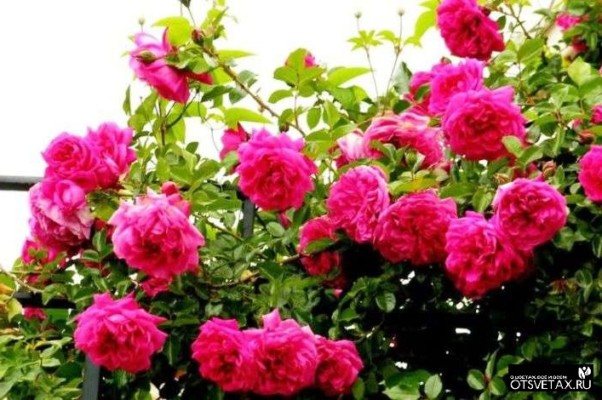

Kordes
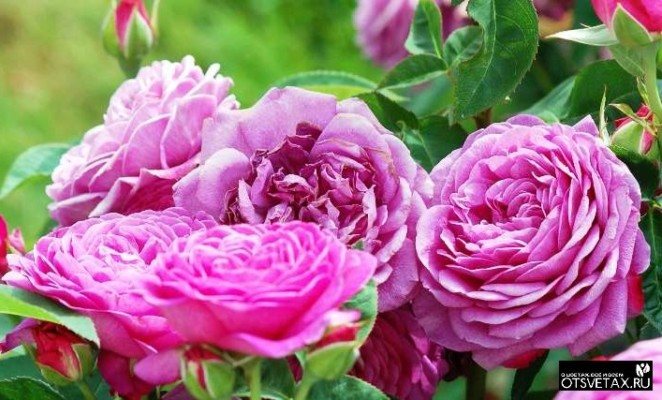

Tantau
Reproduction
Roses can be propagated in a variety of ways, both generatively and vegetatively. It is preferable to use vegetative methods.
Cuttings
Gives 100% result. In the middle of summer, cut the cuttings with at least 2 internodes. Make the bottom cut at an angle of 45 degrees. Remove the lower leaves, cut the upper ones by ½. Fill the container with sand. Embed the cuttings 2 cm deep into it. Cover with a jar, place under diffused light. Remove the jar periodically, water the substrate. After the roots appear, transplant the cuttings to a permanent place.
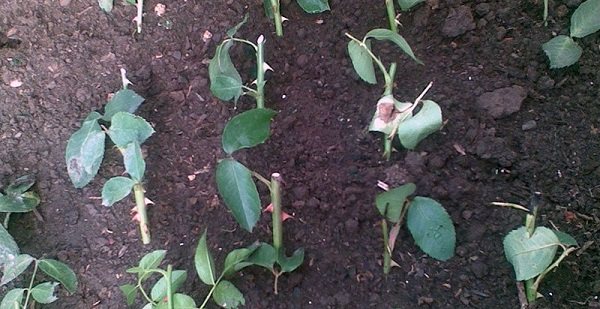

Layers
In the spring, choose a healthy lower shoot, make cuts on it under the buds. Deepen it into a groove, on the bottom of which put humus. Fix the escape with staples. Leave the top on the soil surface. After a year, the cuttings will take root, it can be separated from the main bush and transplanted.
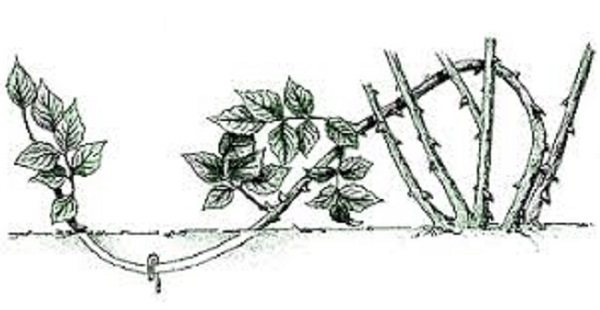

Graft
A climbing rose can be grafted onto a rose hip. It is better to spend it in the middle of summer. Water the rosehip with plenty of water. Make an incision on the root collar with the letter "T", bend the bark slightly. Place in this "pocket" the peephole of a climbing rose with a small fragment of the stem. Press it tightly against the scion and fix it with foil. After a few weeks, the film can be slightly loosened, and completely removed in the spring of the next season.


Climbing roses planting and care in the suburbs, in the Urals, in Siberia
Roses love light, and elevated southern locations suit them. Good lighting ensures the rapid development of growth, flowering can be expected for the next season. It is impossible to plant seedlings in the lowlands, these flowers do not tolerate moisture well.
Know! When climbing roses are used to decorate an object, then they should be planted half a meter from it.
They should be planted in the spring, since in the fall they may not have time to adapt, and the probability of their death is high.They do not have to highlight large areas, fifty centimeters is enough. The size of the pits is 50 x 50 cm. Prepared holes are watered before planting. After the completion of the process, the aerial part must be cut to 15-20 cm. It is done for rapid growth and rich flowering in the future.
If, nevertheless, you choose autumn as a planting, then this should be done at the end of September. The roses must have time to take root, but the buds must not grow.
For the next season, the plant no longer requires such careful and constant care. It is enough to cut the bushes in a timely manner, water and fertilize correctly. Pruning is done to shape and thin the bush. Watering the flowers should be every seven to ten days. Organic, minerals and other fertilizers are suitable as top dressing.
Plant the plants at an angle of thirty degrees to the support. When planting near the house, it is necessary to maintain a distance from the wall so that the flowing water does not fall on the roots. At a slope, the plant is more stable in the ground. The rose may lack moisture against the wall.
Important! Climbing roses develop better in the sun, it is not recommended to plant them in the shade.
Watering
Immediately after planting, until the plant is accepted, it is watered regularly. Adult roses should also be regularly watered from May to August with 20-30 liters of water per bush. When the weather is not hot, water adult bushes once a week, pouring under each 1 liter of water. At the height of flowering and at peak summer temperatures, the frequency of watering is increased to 2-3 times a week.
Make a hole around the bush with sides and pour water only here, making sure that it falls on the leaves as little as possible, as this can lead to burns and plant diseases.
Pruning climbing roses
This stage allows you to form the crown and make the plant more powerful. Through this process, decorativeness is imparted.
Proper care gives a solid growth of young shoots per season. It is recommended to cover the plant for the winter due to severe frosts. At the onset of spring, only dead, frozen parts are subject to pruning.
Long shoots should be spread on the ground so that replacement shoots can be seen. You can tie to supports only after they grow to seventy centimeters.
Pruning differs depending on the plant group. The old shoot has to be replaced with several fresh ones. Therefore, there should be 3-5 annual branches and the same number of two-year branches.
If roses are among those that bloom twice in one passing season, then flowering shoots can be on the branches of the bush for 3 years. Weakening begins only after five years.
Significant shoots are eliminated only in the fourth year. If there are many young animals at the base, then circumcision can be done, as well as with the first group.
Important: When pruning, you should pay attention to vegetative shoots, because the main flowering of the bush is on last year's stems. Young shoots should also be removed so that they do not thicken the bush and do not interfere with the full development of the plant.
Preparing climbing roses for winter
Climbing roses are hardy plants, but despite this, some varieties need to be covered. Therefore, it is important that the blooming plants are properly protected all summer long. There must be an air gap under the shelter. Otherwise, the bushes will die not from frost, but from soaking or damping.
Preparation for winter begins at the end of August. Loosening of the earth, watering and fertilization ends. It is necessary to cover for the winter when the frost is about minus five degrees. Not a big frost will only strengthen before the onset of severe cold weather, it is impossible to cover before their onset.


It is required to prepare roses in dry weather. Plants are removed, foliage is removed, damaged areas are cut off. After that, the lashes are tied and pressed to the ground with special devices.
Important! Roses should not be covered ahead of time, as they will die.
Reproduction of a climbing rose from cuttings
Roses reproduce well with green cuttings, in which there is an acceleration of almost 100%. Winter or summer cuttings can be selected for these purposes, and reproduction begins in the second half of June.
The material is harvested only from healthy shoots, with several internodes, the cut is oblique at the bottom. The leaves are carefully removed from the bottom, the remaining ones are trimmed. The finished material is placed in a specially prepared mixture of sand and earth to a depth of one centimeter. A box, pot, etc. is suitable for a container. In it, the workpiece is covered and slightly shaded.
The irrigation regime is weakened, it is not necessary to add funds for growth. Before placing the cutting under the cover, you can treat it with a solution of alcohol or heteroauxin.
Only part of the varieties from the large flowering group are propagated by budding. This is done in August - September with a sleeping eye in the root collar of one or two summer rose hips.
Autumn planting
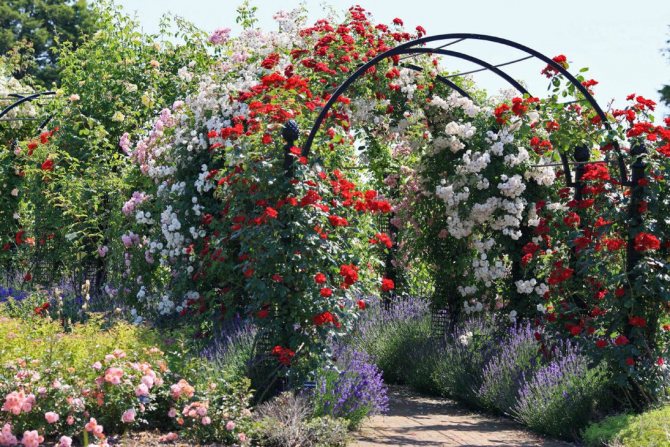

When planning to plant a climbing rose, you must first learn how to choose the highest quality planting material. Nowadays, you can buy seedlings of roses that are self-rooted, as well as those that are grafted onto rose hips. But how are they different? Grafted seedlings have one important difference from their own rooted ones. The fact is that the root system of such a seedling belongs to the wild rose, and on it there is a scion belonging to a varietal climbing rose. In this regard, planting and caring for a self-rooted rose should be somewhat different than for a grafted one. So, for example, a grafted seedling must be buried in the soil during planting in such a way that the place where the graft is located is underground at a depth of 10 centimeters. With this method of planting, the part of the plant that was grafted begins to form its own root system, while the roots of the rose hip eventually become unnecessary and die off. In the case when, during planting, the scion was not buried in the ground, but remained above its surface, it can lead to the death of the plant. The fact is that the wild rose is a deciduous plant, and the grafted rose is an evergreen. If the planting was carried out in violation of the rules, then such a discrepancy between the rootstock and the scion can lead to the death of the cultivated part of the plant.
Seedlings with an open root system must be immersed in a container of water for 1 day, and this should be done immediately before planting in open ground. After that, you should cut off all the leaves and cut off, using a pruner, those stems that are unripe or have been damaged. You should also trim the root system and the aerial part, leaving 30 centimeters each. Places of cuts should be treated with crushed charcoal. If you use grafted seedlings for planting, then they must carefully remove all the buds that are located below the scion. The fact is that rosehip shoots will begin to grow from them. Next, the planting material should be disinfected. To do this, it must be dipped in a solution of copper sulfate (3%).
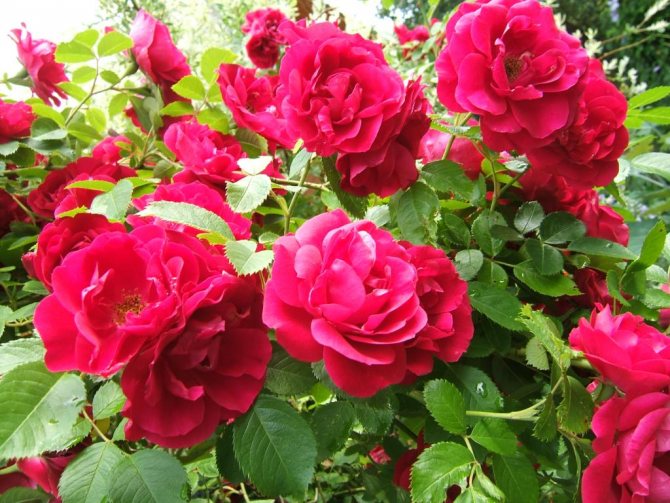

The hole for planting a rose should be 50x50 in size. At the same time, a distance of at least 100 centimeters must be maintained between the planting pits. The top layer of soil most saturated with nutrients must be removed from the dug hole and combined with ½ part of the manure bucket. Part of the resulting soil mixture must be poured into the hole, and then a relatively large amount of water must be poured into it. This procedure must be carried out a day or two before the expected planting of the plant. On the day when you are going to plant a seedling, you need to prepare a special solution in order to process the root system before planting. To prepare the solution, dissolve 1 tablet of heteroauxin, 3 tablets of phosphorobacterin in 500 ml of water.
Then pour this liquid into 9.5 liters of clay talker. Before the seedling is lowered into the hole, its roots should be dipped in the prepared mixture. A mixture of soil and manure should be poured into the hole with a mound. Then you need to place a seedling in the hole, while carefully straightening its roots. Fill the hole with the same mixture of soil and manure and compact the surface of the soil well. Do not forget that the place where the graft is located must be buried 10 centimeters into the ground. At the same time, for a self-rooted seedling, the root collar must be buried 5 or more centimeters into the ground. The planted plant must be well watered. After the liquid is absorbed into the soil, it will be necessary to add a mixture of soil with manure to the hole. Then the plant spuds to a height of 20 centimeters or more.
Variants of using climbing roses
In home gardens, climbing roses are used for different purposes. Plants are suitable as unusual garlands and pyramids, to create an arch of climbing roses or to decorate a gazebo. It will also look great when landscaping an arbor, a fence or a column and many other buildings. Roses will help create a great look.
There are still other, original uses for these plants. If you plant climbing roses near trees or near strong shrubs, then in the near future they will use them as a support. These situations require careful maintenance and pruning. In addition, a tree can easily overpower such a neighborhood, and shrubs may die. Before using the plant as a support, you should make a deliberate decision.
Important! You should choose the right support for a climbing rose.
Climbing rose pests and diseases
Powdery mildew. This disease is caused by a fungus. It appears on the leaves in the form of white spots, which increase over time. Forms well in hot and humid conditions at the end of summer. The plant itself stops growing and stops blooming. That in the end can lead to his death. For the prevention of the disease, experts advise spraying the bushes with Bordeaux solution.
Conitirium is a cancer of the bark. Symptoms of the species when freeing bushes from winter shelter. Red-brown spots appear on the bark, as they grow, they begin to turn black, are able to cover the entire shoot. The infection is located inside, so infected shoots must be quickly cut out, capturing healthy shoots and then immediately burned.
This mushroom grows quickly in the dark under cover. As a preventive measure, nitrogen decreases in the fall, feeding for tissues, shelter at the right time and airing if necessary, removing material. Removal and destruction of damaged areas. In addition to them, the plant can infect aphids and spider mites.
What kind of climbing rose to buy
When choosing roses for planting, it is important to choose them correctly. To buy exactly those varieties that you would like, you can look at them in the photo for clarity, there are a large number of them on the Internet. Thus, it will be easier to determine the type of flower. You can choose an unpretentious look with minimal attention. Or vice versa, the one with which you constantly need to deal.
Having acquired such a wonderful plant, the owner will enjoy the extraordinary beauty all summer season, and climbing roses can decorate various objects, which makes it even more attractive.
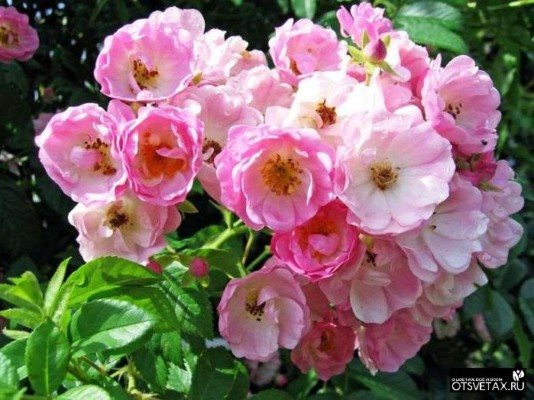

The main thing to remember is that the plant needs care to achieve maximum results. Namely, the correct planting, timely feeding and watering and other equally necessary actions. And of course, the implementation of preventive measures in the fight against pests and diseases.


